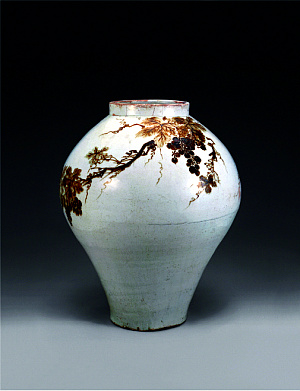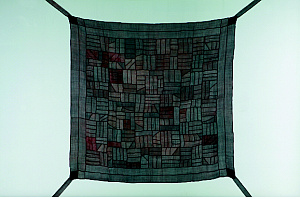
1. Jar with Grapevine Design in Underglaze Iron: This simple jar is in fact the National Treasure number 107. It was used by the royal family and credited highly for the quality painting which features classic characteristics of mid-Joseon Dynasty porcelains. Before Helen Kim, the first president of Ewha, purchased the jar for the museum in 1960, the Jar was owned by a Japanese collector named Shimisuko-ji, during the Japanese colonial era. After the liberation of Korea, Shimisuko-ji had to leave behind his collections. He valued the jar so highly he asked his Korean friend named Kim to care of it until he came back. Kim’s wasted son sold the jar to an antique dealer. It was when the dealer tried to sell the jar to collectors that Chang Taek-geun, a famous porcelain collector and chief of the National Police Agency at the time, recognized the legendary piece.

2. Gisa-gyecheop (illustrated album commemorating the gathering of the members of the hall of elder statesman): The illustrated album is placed in the special exhibition room on the second floor, where 52 pages of the album are spread across the wall. The album was crafted in order to celebrate the entrance of Sukjong, the 19th king of the Joseon dynasty, into giroso, the hall of elder statesmen for elderly kings and courtiers more than 60 years old. The album consists of illustrations of the ceremony and the banquet, portraits of the member and the congratulatory poems by the members. The illustrations depict the actual ceremony in such detail that the illustration can be read like a comic book. The descriptive portraits are life-like, complete with every little detail ranging from mustaches to facial wrinkles.

3. Palanquins: In the permanent exhibition hall 2, there are pieces from the Chang Budeok Memorial Gallery collection. They feature two palanquins – carriages used in Asian countries carried by several men – from the 19th century Joseon dynasty. Both were for nobles. One palanquin made of black-lacquered wood inlayed with mother-of-pearl, was only used for wedding ceremonies of daughters from distinguished families.



